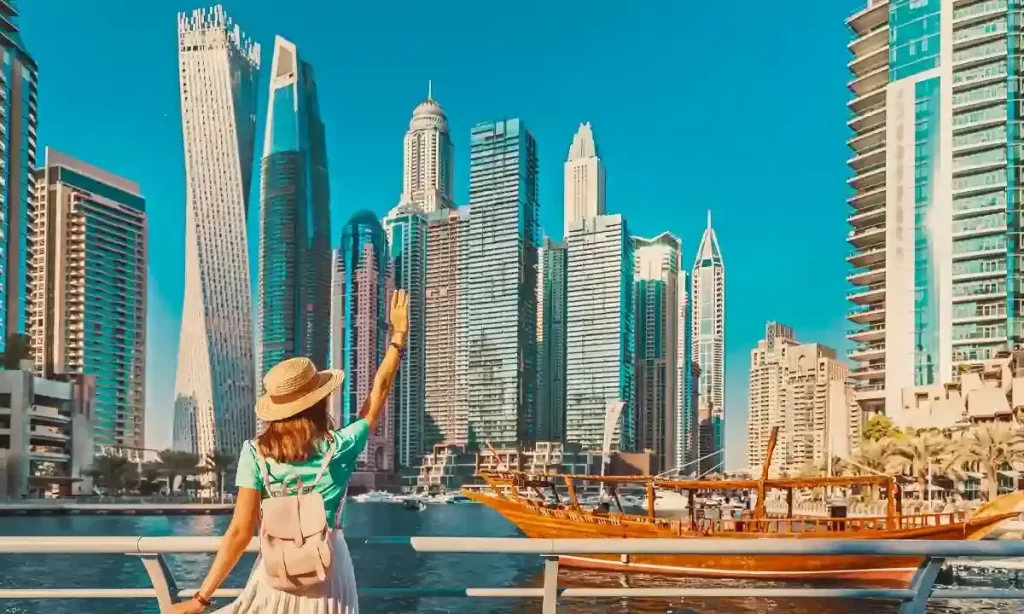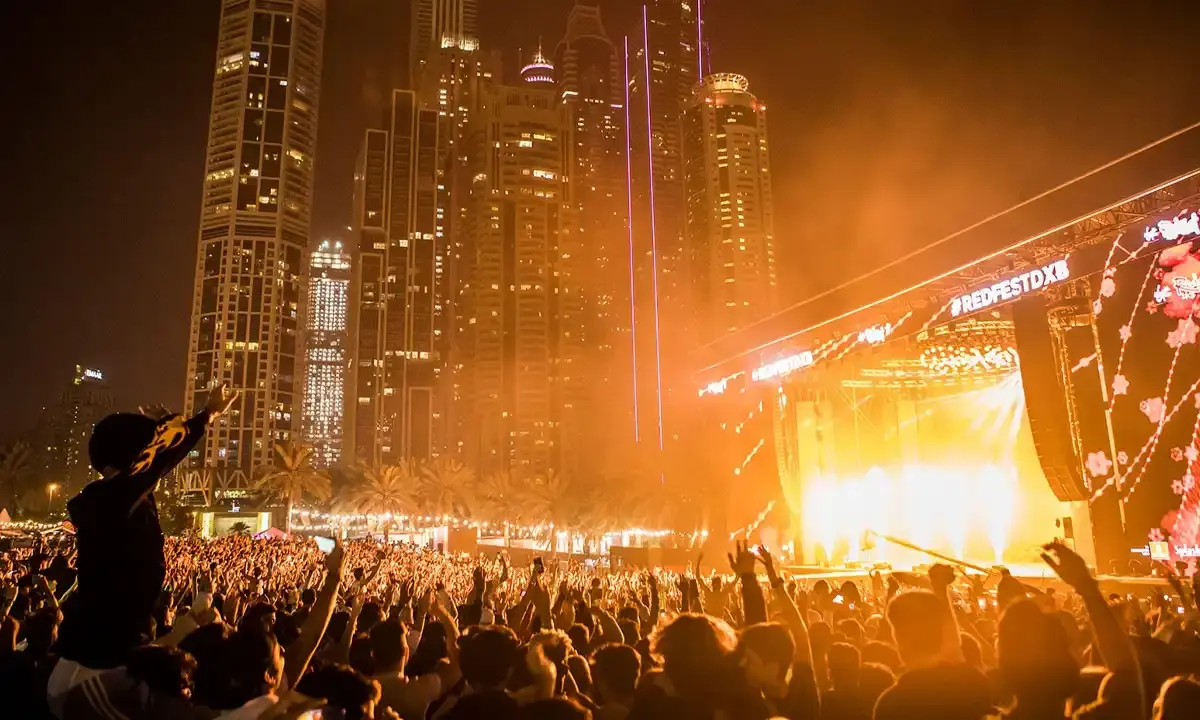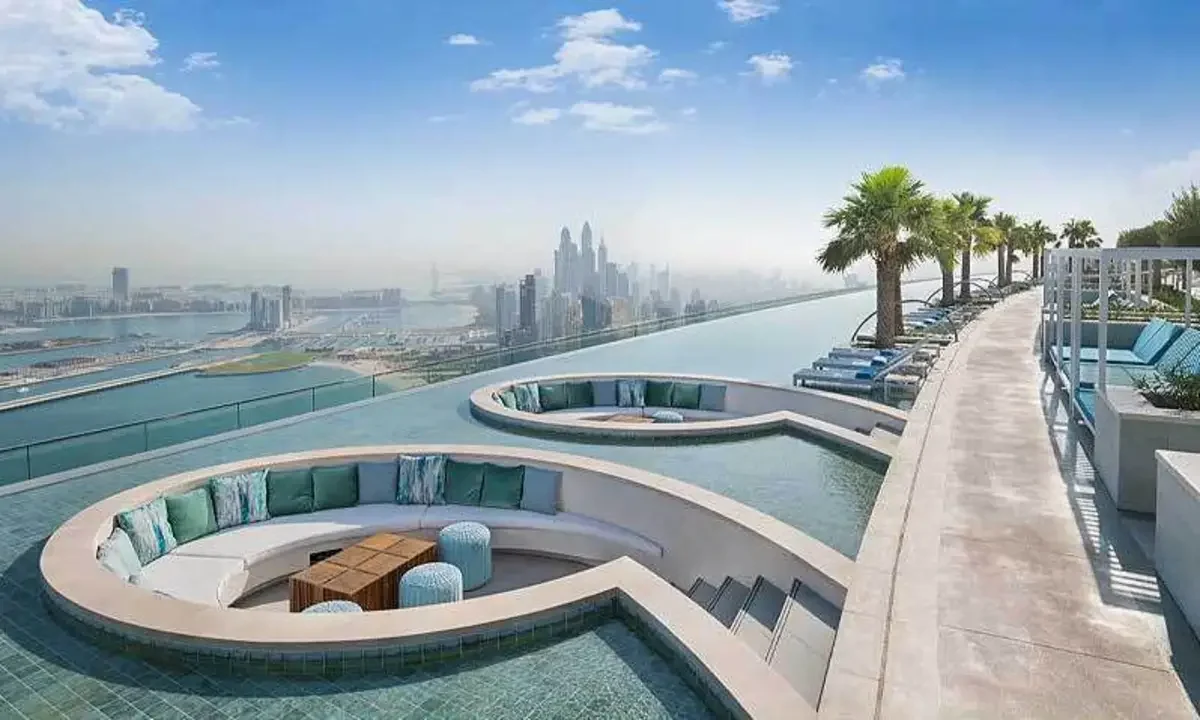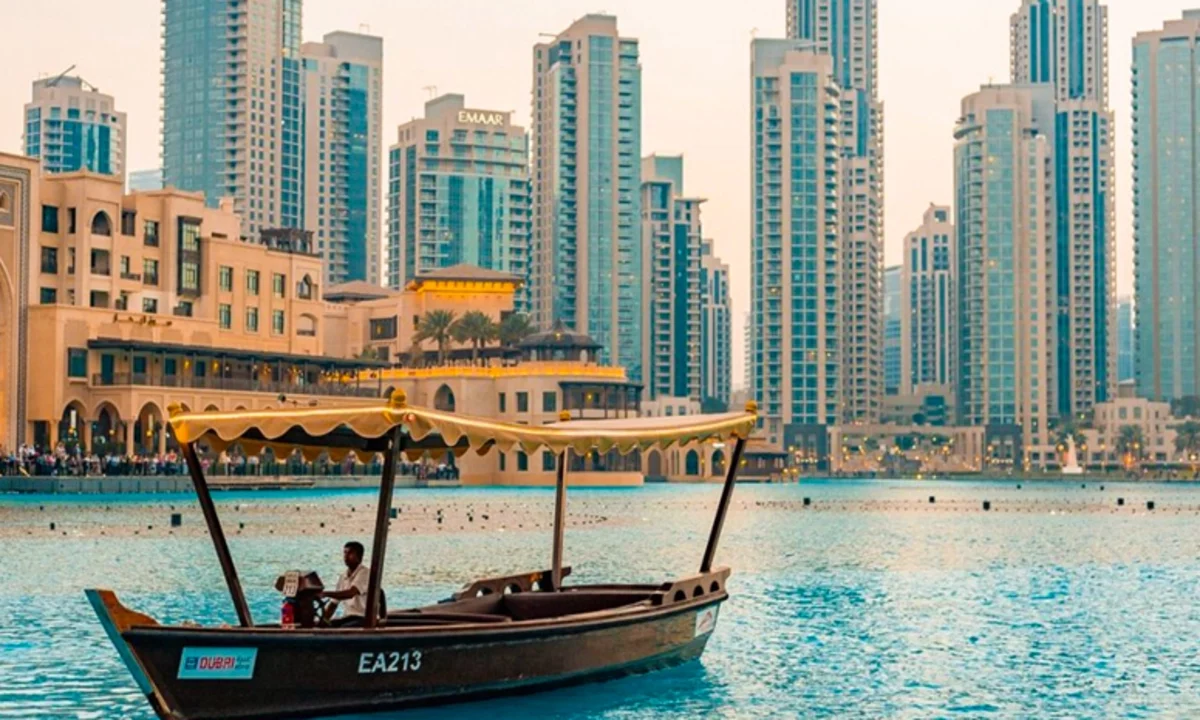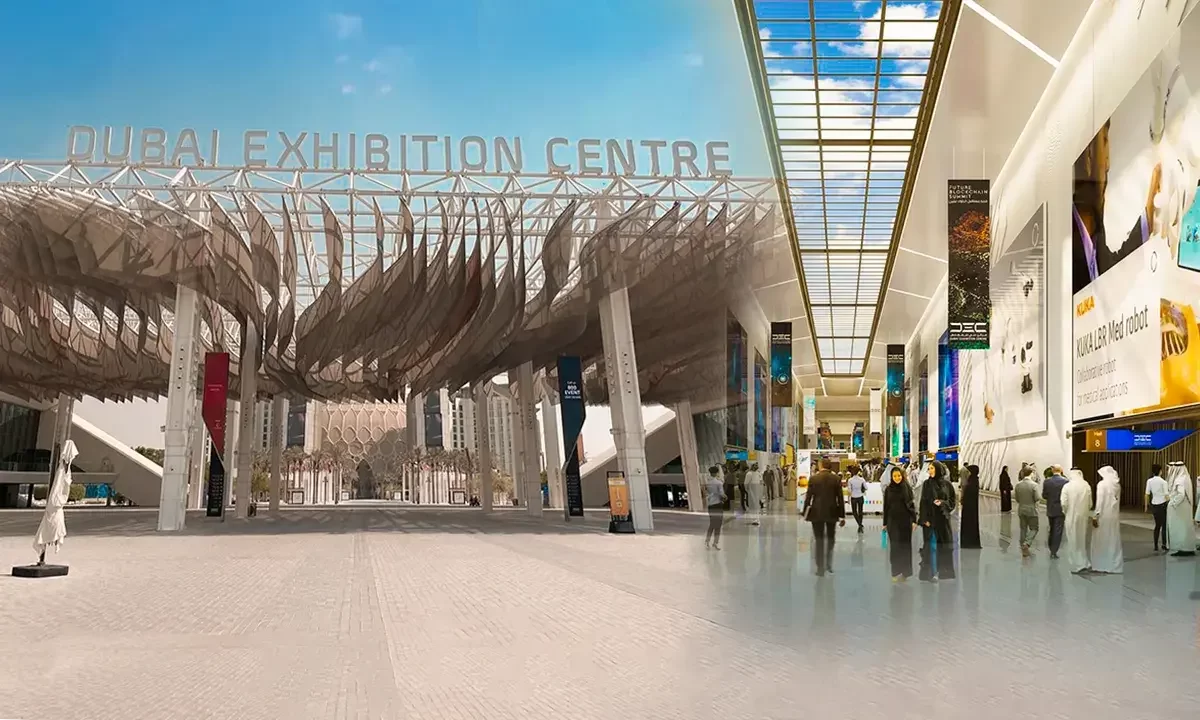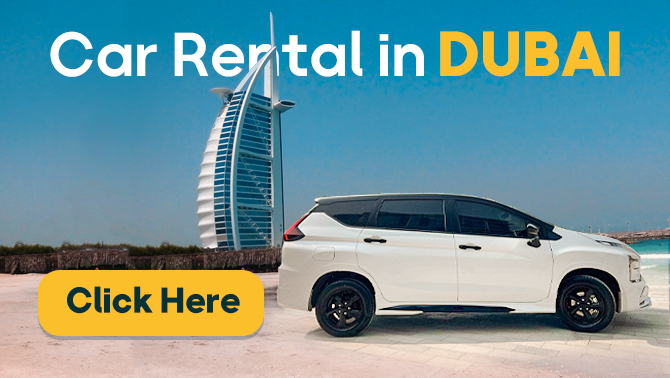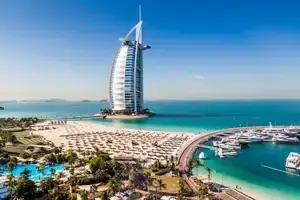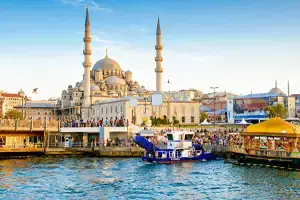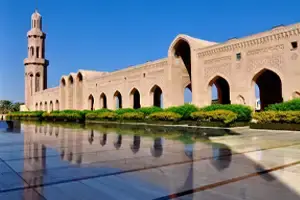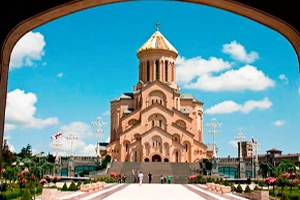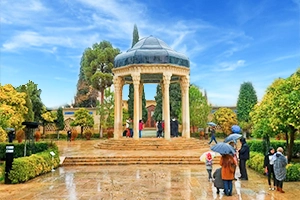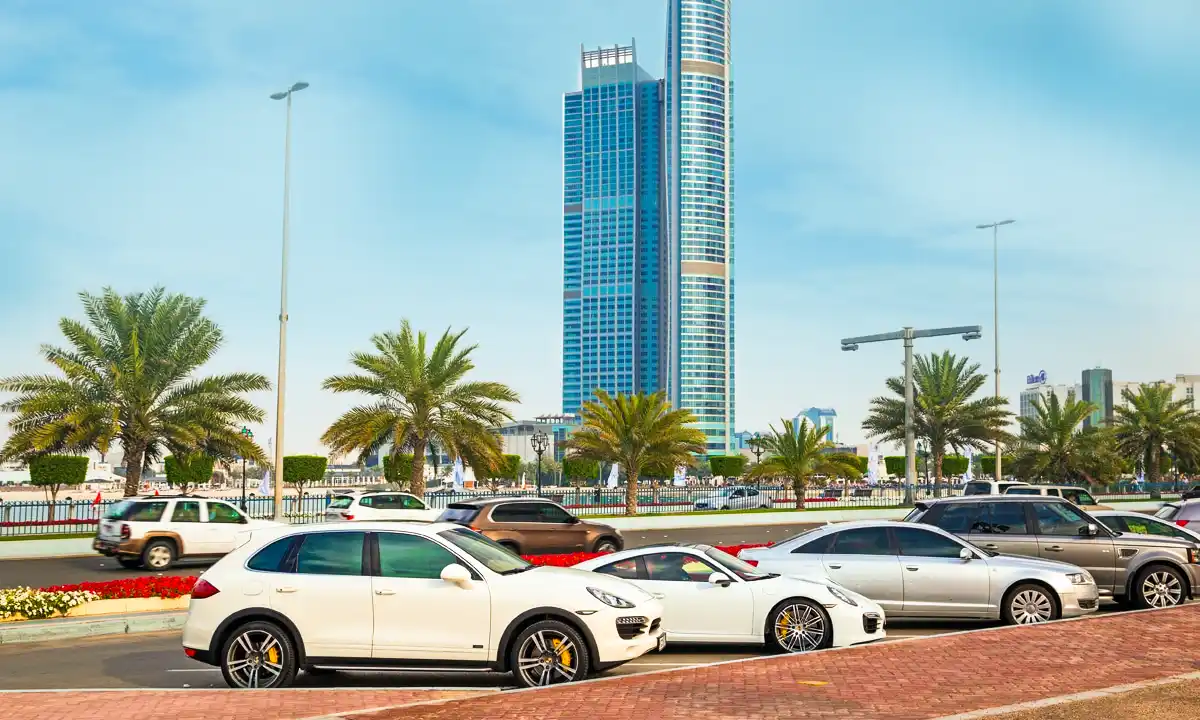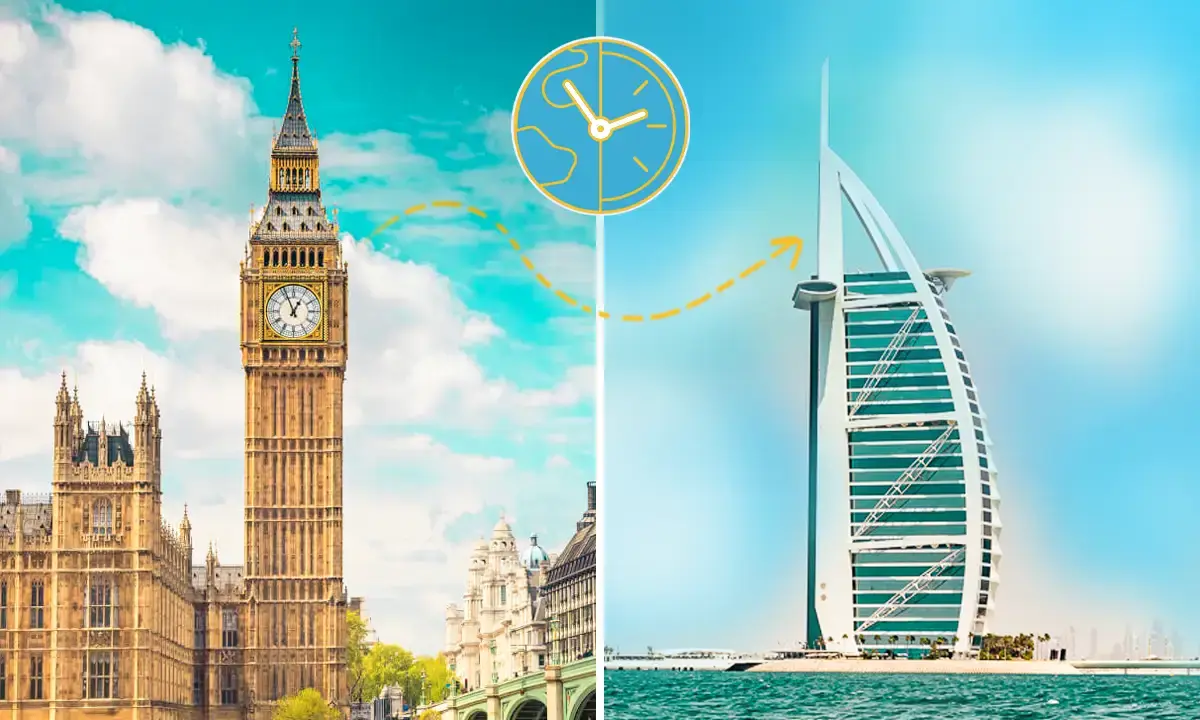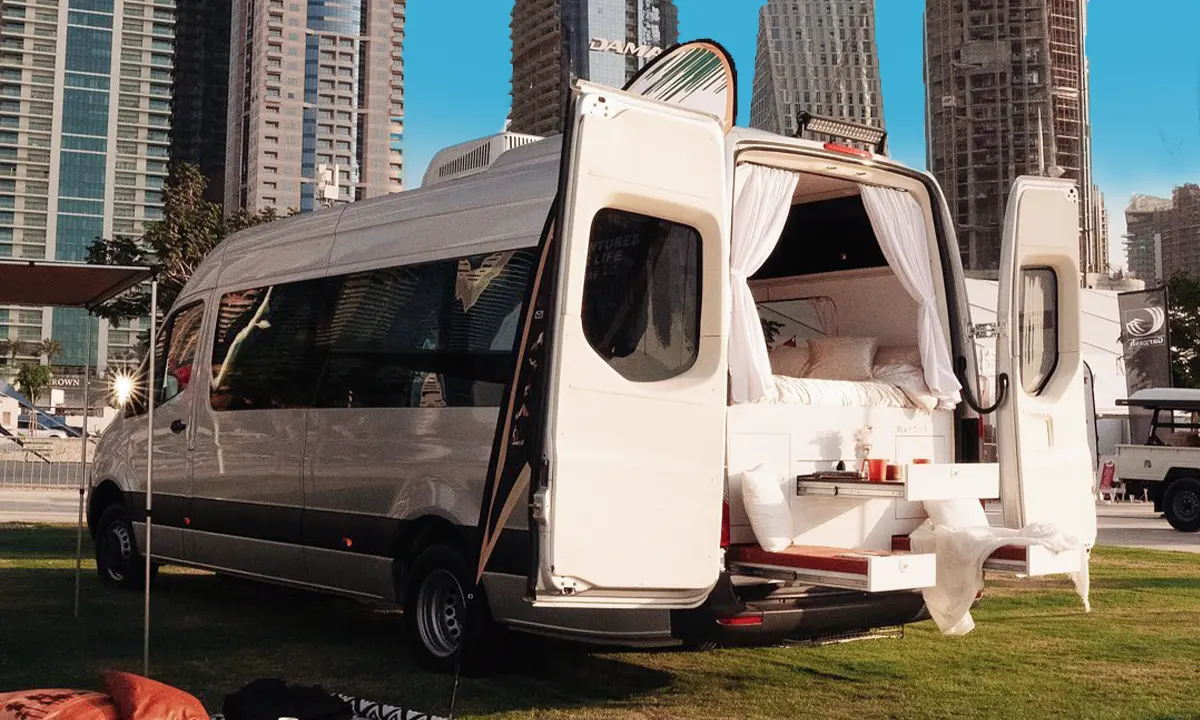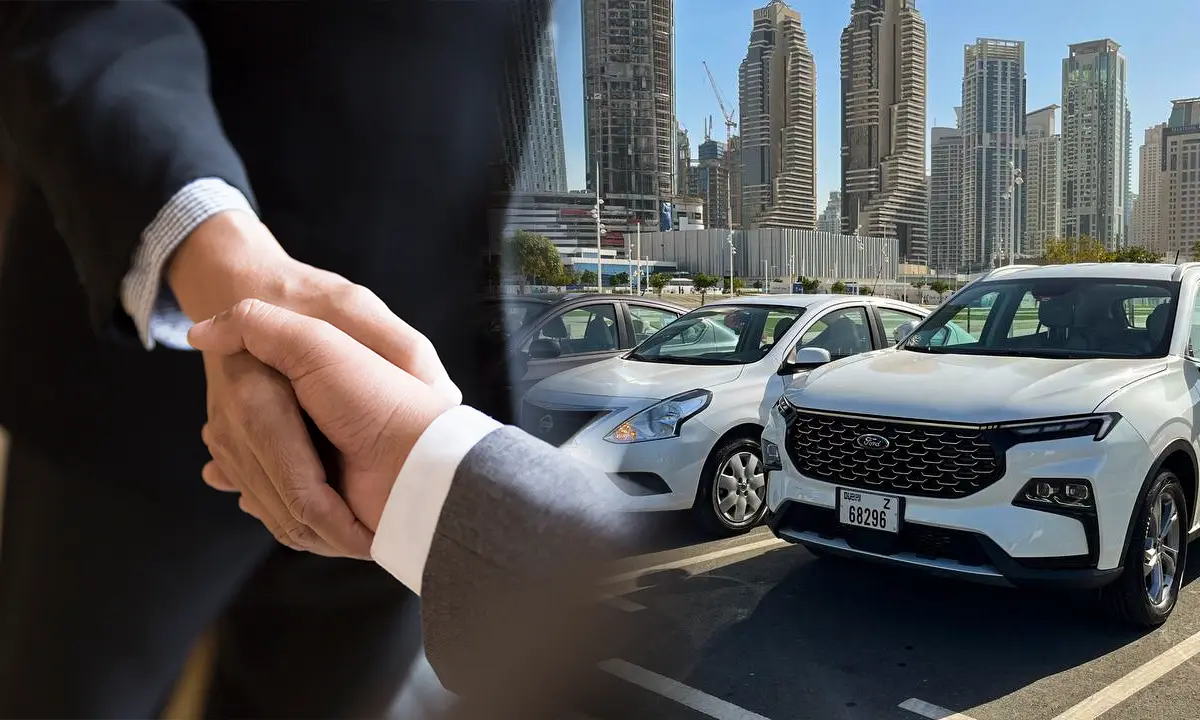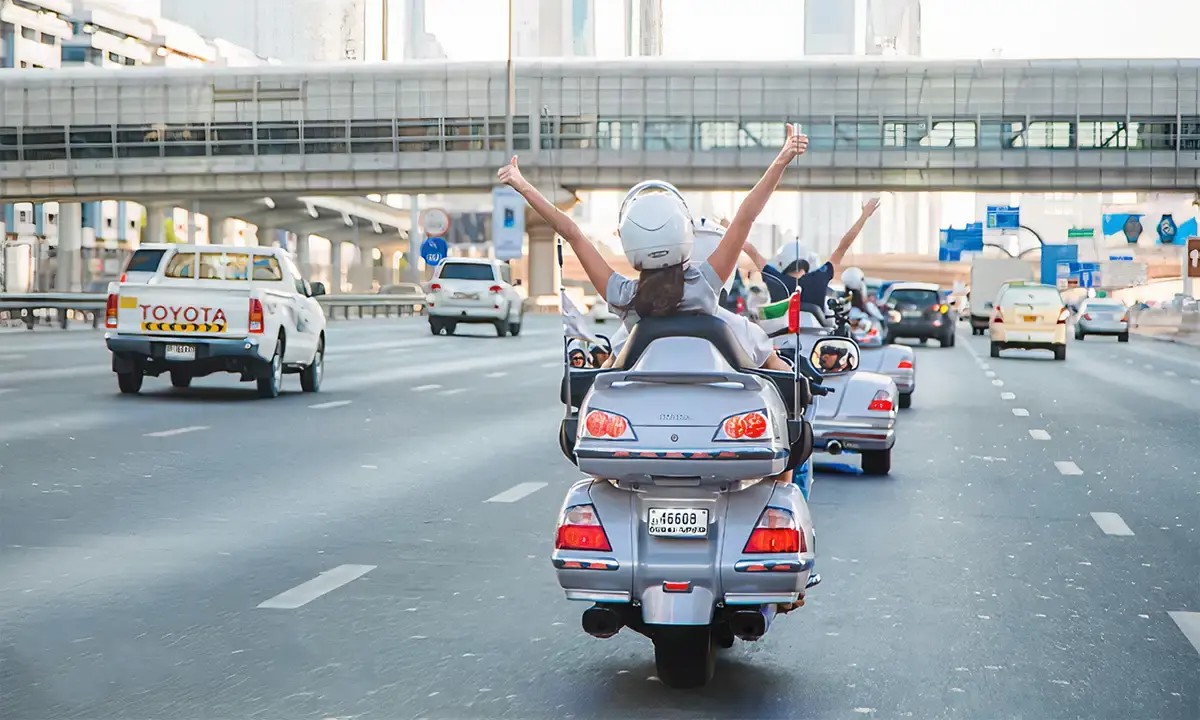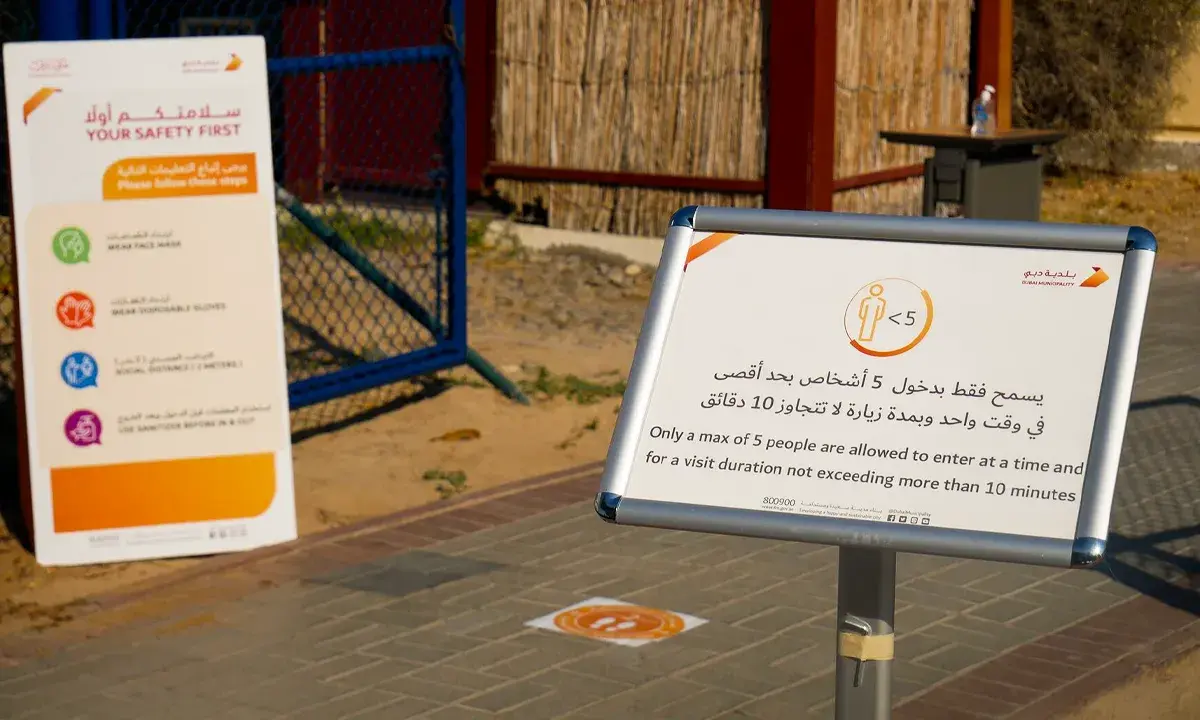Ever wondered why Dubai is the world’s top tourist destination? This glittering gem of the UAE captivates with its stunning architecture, luxurious lifestyle, and relentless pursuit of excellence. In this article, we’ll explore why Dubai stands out as The World’s Best Destination. From the iconic Burj Khalifa and man-made Palm Islands to its array of luxurious resorts, Dubai’s transformation from a desert town to a global tourism hub is extraordinary. Join us to uncover the secrets behind Dubai’s irresistible allure, making it a must-visit for travelers seeking unparalleled experiences and unmatched grandeur.
Dubai Uncovered: An Intro to the City
Nestled on the eastern Arabian Peninsula’s Persian Gulf shores, Dubai, the most populous city in the UAE, blends tradition with modernity. Once a 19th-century fishing village, Dubai’s transformation has been extraordinary.
Now a global epicenter for trade, tourism, luxury, and innovation, its rapid growth began in the early 20th century and skyrocketed through the late 20th and early 21st centuries.
Dubai’s skyline features the Burj Khalifa, the world’s tallest building at 828 meters. It also has the second-largest number of five-star hotels globally, offering unmatched luxury.
Fueled by oil revenue and strategically positioned as a major transport hub, Dubai’s diversified economy thrives on trade, tourism, aviation, real estate, and financial services, with minimal recent oil contributions.
With a multicultural population of around 3.63 million as of 2023, Dubai remains a leading tourist destination, winning TripAdvisor’s Travelers’ Choice Awards for 2023. Welcome to a city where the past meets the future and opulence meets tradition – welcome to Dubai.
Dubai’s Location and Geography
Situated on the Arabian Gulf coast within the UAE, Dubai lies at approximately 25.2697°N latitude and 55.3095°E longitude, just 16 meters (52 feet) above sea level. It borders Abu Dhabi to the south, Sharjah to the northeast, and connects with the Sultanate of Oman to the southeast. Hatta, a minor exclave of Dubai, is surrounded by Oman and bordered by Ajman and Ras Al Khaimah.
The city boasts a stunning coastline along the Persian Gulf, crucial to its maritime history and economy. Dubai Creek, a natural inlet, has been dredged to accommodate large vessels, highlighting this legacy.
Dubai’s terrain is diverse. The northern region features sandy deserts with fine, white sands from crushed shells and coral. Moving east, coastal plains turn into salt-crusted sabkha, then north-south-running dunes with a reddish hue from iron oxide. The proximity to the Western Hajar Mountains in the east introduces arid, jagged landscapes reaching heights of about 1,300 meters (4,265 feet).
Despite its arid environment, Dubai has pockets of greenery in parks and natural spaces, with trees like date palms, neem, and eucalyptus. The desert and mountains provide habitats for wildlife, including caracals, falcons, Arabian oryx, and migratory birds. The Persian Gulf’s marine life features dugongs, dolphins, and turtles.
The Elegant Flag of Dubai
The flag of Dubai and Ajman is a striking symbol of unity and heritage. With a 1:2 proportion, it features a bold red field that immediately captures attention. A vertical white band adorns the left side, symbolizing peace, while the vibrant red represents the valor and determination of its people. This flag reflects the two emirates’ shared history and future aspirations, showcasing the harmonious coexistence of tradition and modernity. Waving proudly, it embodies their rich culture and unwavering commitment to progress in a region renowned for dynamic growth and innovation.
Dubai’s Cityscape
Dubai’s dazzling cityscape is a testament to human ambition and innovation. As the sun dips below the horizon, the city’s skyline comes to life, casting an enchanting glow across the Arabian desert. The Burj Khalifa, an architectural masterpiece, pierces the sky at 828 meters, dominating the skyline as the world’s tallest building. Its LED-lit façade dances with a mesmerizing light show, illuminating the night.
Surrounding the Burj Khalifa, a forest of skyscrapers glitters with a kaleidoscope of colors, each one vying for attention with its unique design. The Burj Al Arab, shaped like a billowing sail, stands as an iconic symbol of luxury and opulence, while the Palm Jumeirah, a man-made island in the shape of a palm tree, shimmers in the moonlight.
Dubai’s cityscape also boasts architectural wonders such as the twisted Cayan Tower, the futuristic Museum of the Future, and the Dubai Frame, a giant picture frame that frames the city itself. The city’s infrastructure is a marvel, with intricate networks of highways, bridges, and tunnels weaving through the urban sprawl.
Dubai’s cityscape isn’t just about skyscrapers; it’s a juxtaposition of modernity and tradition. The historic Al Fahidi neighborhood with its wind-tower architecture stands in stark contrast to the futuristic skyline, offering a glimpse into the city’s rich heritage.
In this vibrant metropolis, every night is a spectacle of light and color, where the city’s ambitions and dreams are etched into the very fabric of its skyline. Dubai’s cityscape is a true testament to the limitless possibilities of human imagination and ingenuity.
Iconic Landmarks: A Visual Extravaganza
Dubai’s iconic landmarks are a visual extravaganza that epitomizes the city’s ambition and architectural innovation. The Burj Khalifa, towering at 828 meters, features a sleek, modern design that embodies Dubai’s transformation into a global metropolis. Its nightly light displays mesmerize onlookers with a vibrant dance of colors.
The Palm Jumeirah, an artificial island shaped like a palm tree, showcases human engineering prowess, with opulent resorts and luxury homes lining its fronds. The Burj Al Arab, resembling a billowing sail, glistens in the sunlight and redefines luxury as the world’s only seven-star hotel.
At the base of the Burj Khalifa, the Dubai Fountain offers a captivating water and light show with choreographed performances. The Dubai Frame, a colossal golden picture frame, provides breathtaking views from its observation deck, bridging the city’s past and future.
Other architectural wonders include the twisting Cayan Tower, the ambitious Museum of the Future, and the vibrant Dubai Opera House, each showcasing Dubai’s dedication to pushing the boundaries of design and technology.
These landmarks highlight Dubai’s journey from a desert town to a dazzling cityscape, merging art, culture, and engineering to create a constantly evolving spectacle of modernity and opulence.
Dubai’s Multicultural Mosaic
Dubai’s multicultural mosaic is a shining testament to the city’s extraordinary ability to harmoniously blend diverse cultures, nationalities, and traditions. Situated at the crossroads of the world, this thriving metropolis has become a global melting pot, where over 200 nationalities coexist in an environment of tolerance and mutual respect.
The UAE’s leadership has been instrumental in fostering this inclusive society, ensuring that people from various corners of the globe feel welcomed and valued. Dubai’s policies, like the long-term residency program, have encouraged expatriates to call the city home, fostering a sense of belonging.
The city’s dynamic cultural scene showcases its diversity in various ways. The historic Al Fahidi district offers a glimpse into Emirati heritage, while the vibrant neighborhoods of Deira and Bur Dubai are home to communities from India, Pakistan, and other South Asian countries. The Dubai Opera hosts performances ranging from classical music to contemporary theater, and the annual Dubai International Film Festival brings world cinema to its audience.
The culinary landscape mirrors the multicultural fusion, with international restaurants dotting the city, serving up flavors from around the world. The Dubai Food Festival celebrates this culinary diversity, where food enthusiasts can savor delicacies from all corners of the globe.
Dubai’s multicultural mosaic is not just about coexistence but a vibrant celebration of differences, fostering a spirit of unity and collaboration that has been a driving force behind the city’s remarkable growth and success. It’s a testament to the idea that diversity is a source of strength and vitality, making Dubai a remarkable example of a harmonious global city.
Demographic Diversity: People of Dubai
Dubai’s demographic diversity is a vibrant tapestry of cultures and backgrounds, making it a truly global city. As of September 2019, the city’s population stood at 3,331,420, and it has experienced rapid growth, with an annual increase of 177,020 people, representing a remarkable growth rate of 5.64%. This remarkable surge in population density, at 408.18 individuals per square kilometer, underscores the city’s magnetic appeal.
A striking feature of Dubai’s demographic landscape is its demographic mix. Only about 15% of the population comprises Emirati nationals, with the rest consisting of expatriates. A substantial 85% of the expatriate population is Asian, predominantly hailing from India (51%) and Pakistan (16%), along with significant communities from Bangladesh and the Philippines. Dubai also hosts a notable portion of its population with roots tracing back to Iran.
The Western expatriate community, including over 100,000 British residents, contributes to the cosmopolitan nature of the city. Dubai’s population is youthful, with a median age of about 27 years, and it experiences a dynamic birth rate, reflecting the city’s vitality and growth.
Language diversity is another hallmark of Dubai, with Arabic as the official language and English widely used as a second language. The city’s immigrant communities bring with them a rich linguistic tapestry that includes Malayalam, Hindi-Urdu, Gujarati, Persian, Sindhi, Tamil, Punjabi, Pashto, Bengali, Balochi, Tulu, Kannada, Sinhala, Marathi, Telugu, Tagalog, and Chinese, among many others. This rich linguistic tapestry is a testament to Dubai’s welcoming embrace of cultures from around the world.
Religious Pluralism in Dubai: A Diverse Spiritual Landscape
Dubai is a remarkable example of a city where religious diversity thrives alongside the predominant Islamic faith. As per the UAE’s Provisional Constitution, Islam is declared the official state religion, and the government plays a significant role in overseeing its practice. Government subsidies cover nearly 95% of mosques in Dubai, and the appointment of Imams falls under governmental authority. The Constitution, however, provides for freedom of religion, underscoring Dubai’s commitment to respecting the beliefs and practices of its diverse population.
In addition to its Muslim majority, Dubai hosts sizable communities of Christians, Hindus, Sikhs, Bahá’ís, Buddhists, and others. There’s also a growing Jewish community. The Dubai of 2014 boasted a mosaic of beliefs, with 56% of residents identifying as Muslims, 25% as Christians, 16% as Hindus, and 2% adhering to various other religions.
Dubai’s commitment to religious freedom is further evident through the allowance of non-Muslim groups to own their places of worship and practice their faith without hindrance. This inclusive approach has led to the coexistence of religious communities in shared spaces, promoting understanding and tolerance. It’s a testament to Dubai’s harmonious and diverse spiritual landscape.
Dubai’s cultural integration
Cultural integration in Dubai is a remarkable showcase of how this metropolis has evolved into a global hub where diverse traditions, languages, and customs beautifully coalesce. The city’s population is an eclectic blend of Emiratis and expatriates from around the world, creating a dynamic cultural landscape that is both enriching and harmonious.
Dubai embraces its multicultural identity through a myriad of avenues. The city hosts festivals and events that celebrate various cultures, from Diwali to Eid, allowing residents and visitors to partake in the festivities of numerous traditions. International cuisine thrives, with restaurants offering a global menu, reflecting the city’s inclusive spirit.
Neighborhoods like Al Fahidi and Al Quoz are rich in artistic expression, fostering a creative hub where local and international artists exhibit their works. The Dubai Opera and cultural centers regularly showcase music, dance, and theater from various cultures, while museums like the Dubai Museum and Etihad Museum offer insights into the city’s history and heritage.
Dubai’s cultural integration is a testament to its open-mindedness, welcoming diverse influences, and showcasing them as part of the city’s vibrant tapestry. It’s a global metropolis where cultures converge, coexist, and contribute to the collective identity, turning Dubai into a truly cosmopolitan city.
Economic Diversity in Dubai
While elements of Dubai’s early development were linked to the oil industry, the emirate’s resilience and vision have led to a broad-based, multifaceted economy.
Revenues from oil and natural gas now account for less than 5% of Dubai’s income. With a daily oil production of around 50,000 to 70,000 barrels and gas from offshore fields, the emirate’s share in the UAE’s total gas revenues is approximately 2%. This diversification has a deliberate strategy to reduce dependence on oil and gas, given the diminishing oil reserves expected to be exhausted within the next two decades.
Key contributors to Dubai’s economy include real estate and construction (22.6%), trade (16%), entrepôt services (15%), and financial services (11%). These sectors have flourished due to strategic planning and investment. Dubai’s status as a major trading hub is further exemplified by its non-oil foreign trade, which stood at $362 billion in 2014, with substantial imports, exports, and re-exports.
Dubai’s openness to international business is evident in its diverse trading partnerships. China, India, the United States, and the Kingdom of Saudi Arabia have emerged as significant trading partners, and the city conducts commerce with countries worldwide.
The city’s success isn’t limited to commerce. Dubai has become an international financial hub, home to the Dubai Financial Market (DFM) and NASDAQ Dubai. The Dubai Multi Commodities Centre (DMCC) has been recognized as the “Global Free Zone of the Year 2016.” Additionally, the “City of Gold” nickname is a testament to the significance of the gold trade, with substantial trading volumes.
Tourism plays a pivotal role in the Dubai government’s strategy, and the city is known as the “shopping capital of the Middle East.” It attracts millions of visitors to its iconic landmarks, creating a vital sector in the economy.
Efficient Social Management
Dubai’s efficient social management can be attributed to a unique blend of traditional governance principles and modern administrative structures. The emirate, under the leadership of the Al Maktoum family since 1833, operates as a constitutional monarchy, with a keen focus on citizen engagement, urban development, and public services.
At the heart of Dubai’s governance is the dynamic leadership of His Highness Sheikh Mohammed bin Rashid Al Maktoum, who serves as the ruler, Vice-President, and Prime Minister of the United Arab Emirates (UAE). This multi-faceted role ensures a holistic approach to policy-making and governance, both at the local and federal levels.
Dubai’s engagement with its citizens is exemplified by its participation in the electoral college, where residents vote for representatives to the Federal National Council of the UAE, the supreme federal legislative body. This mechanism allows the people of Dubai to have a voice in shaping the nation’s policies.
The Dubai Municipality, established in 1954, has evolved into a powerful subnational authority, responsible for city planning, citizen services, and maintaining local facilities. The Government of Dubai oversees more than 58 governmental departments, addressing various aspects of public life, including security, economic policy, education, and transportation. Importantly, it maintains a separate judicial system, promoting the rule of law and ensuring that justice is served effectively.
The Dubai Executive Council, led by the Crown Prince of Dubai, has played a pivotal role in streamlining the management of governmental agencies. This delegation of authority has enhanced the efficiency of decision-making and policy implementation.
Furthermore, Dubai’s traditional open majlis serves as a platform for citizens to voice their concerns and provide feedback on domestic issues, ensuring a constant dialogue between the rulers and the ruled.
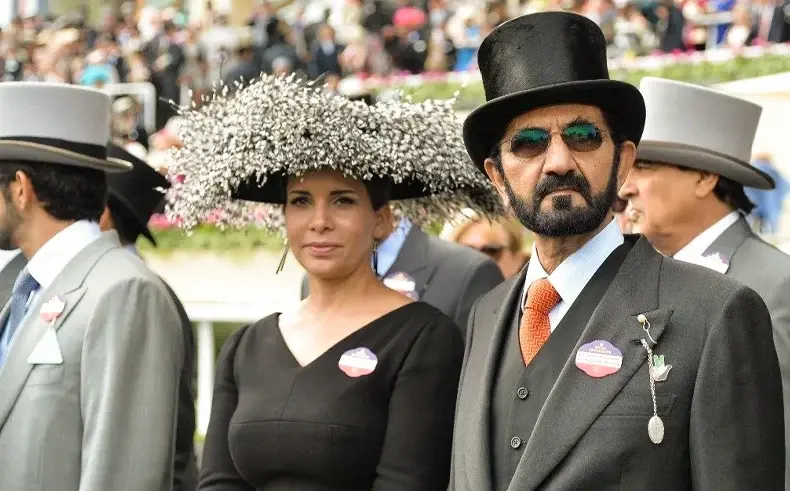
Government and Public Services in Dubai
In Dubai, government and administration play a pivotal role in shaping the city’s future. The Emirate is known for its efficient, forward-thinking leadership. Their visionary approach has transformed Dubai into a global metropolis.
The healthcare and education sectors in Dubai exemplify excellence. World-class hospitals and medical facilities provide top-notch healthcare services. Similarly, the education system is characterized by quality, attracting students from around the world.
In tandem with these sectors, Dubai’s infrastructure development is remarkable. Modern skyscrapers, well-connected roads, and a state-of-the-art transportation system showcase the city’s commitment to progress. Public services are easily accessible, ensuring residents and visitors enjoy a high standard of living.
Furthermore, Dubai’s commitment to sustainability is evident. Initiatives like the Dubai Metro, a symbol of environmental responsibility, exemplify the Emirate’s dedication to green urban planning.
In conclusion, Dubai’s government and administration, combined with healthcare, education, and infrastructure excellence, underscore the Emirate’s remarkable transformation. Public services ensure that Dubai remains a global hub for business and tourism.
Policing and Civil Liberties in Dubai
Law Enforcement in Dubai is characterized by a unique blend of modern policing and a legal system that incorporates elements of both Islamic Sharia law and civil law. The Dubai Police Force, founded in 1956, operates with a fleet of exotic cars and is under the direct command of Sheikh Mohammed bin Rashid al Maktoum, symbolizing the Emirate’s commitment to high-tech law enforcement.
Dubai maintains its judicial system, separate from the federal judiciary of the United Arab Emirates, consisting of the Court of First Instance, the Court of Appeal, and the Court of Cassation. This system accommodates both civil and criminal cases, with a Sharia Court handling matters involving Muslims. It’s important to note that non-Muslims are exempt from the jurisdiction of the Sharia Court.
Alcohol sale and consumption are legal but regulated, with non-Muslim adults requiring a license to possess and consume alcohol. Drinking and driving is illegal, with a legal drinking age of 21.
Regarding human rights, Dubai has faced criticism in the past, particularly concerning the treatment of foreign laborers. Reports of inhumane living conditions and labor injustices have raised concerns, leading to international scrutiny. The government has denied these allegations, but they remain a subject of debate. Freedom of speech is limited, with severe sanctions for speaking out against the royal family or local laws.
Furthermore, homosexual acts are illegal, and the enforcement of these laws can result in harsh punishments. Human trafficking and forced labor issues persist, and there are reports of individuals being forced into the sex trade. Defamation on social media is a punishable offense, with substantial fines and potential jail terms for those found guilty.
Cultural Fusion and Entertainment in Dubai
Cultural Fusion in Dubai is a dynamic and captivating phenomenon that reflects the city’s diverse history and its rapid evolution into a global metropolis. The cultural tapestry of Dubai is a harmonious blend of traditional Arab and Islamic values, alongside the influences of an increasingly multicultural population. This fusion is evident in various aspects of daily life.
Dubai’s architecture, music, attire, cuisine, and lifestyle all bear the imprint of Arab and Islamic culture. Mosques with their iconic minarets call Muslims to pray five times a day, creating a serene connection to tradition. In the past, the weekend was Thursday-Friday, respecting Islamic practices. However, in recent years, Dubai transitioned to a Friday afternoon, Saturday, and Sunday weekend to align with global business standards.
The city’s culture has evolved as a result of its burgeoning international community, tourism, and high living standards. Dubai is now synonymous with luxury, opulence, and leisure-related extravagance. Annual events like the Dubai Shopping Festival and Dubai Summer Surprises draw millions of visitors, emphasizing the city’s vibrant and lavish lifestyle.
Dubai’s nightlife is renowned, with clubs and bars primarily situated within hotels due to liquor laws. This cultural transformation has turned Dubai into a global hub for socializing and entertainment.
As an expatriate hub, Dubai’s demographic diversity is striking. A multitude of nationalities and ethnic backgrounds coexist, contributing to a rich cultural milieu. This cultural mix is most apparent during major holidays such as Eid al-Fitr and National Day, which are celebrated with great enthusiasm.
Dubai’s Culinary Delights and Dress Code
Dubai, a city known for its extravagant lifestyle and rich cultural diversity, offers a tantalizing culinary experience that reflects the cosmopolitan nature of the metropolis. Arabic cuisine takes center stage, with its tantalizing flavors and aromas found in everything from small shawarma diners in Deira to the high-end restaurants in Dubai’s luxury hotels. Fast food, South Asian, and Chinese cuisines are also widely popular and readily available to satisfy diverse palates.
It’s important to note that Dubai observes certain regulations regarding the sale and consumption of pork and alcoholic beverages. Pork is sold only in designated areas of supermarkets and airports and is intended for non-Muslims. Likewise, the sale of alcohol is controlled, requiring a liquor permit for purchase, but it can be enjoyed in bars and restaurants within hotels. For those seeking a more traditional Middle Eastern experience, shisha, and qahwa boutiques are peppered throughout the city.
The Dubai Food Festival inaugurated in 2014, has become a hallmark of the city’s culinary scene. This festival celebrates the rich tapestry of flavors and cuisines from over 200 nationalities. It’s a testament to Dubai’s position as the gastronomic capital of the region and an opportunity for locals and visitors to explore a world of culinary delights.
When it comes to dress code, Dubai embodies a blend of modernity and tradition. The Emirati attire, such as the “abaya” for women and the “kandurah” or “dishdasha” for men, is a common sight. Women often wear the “abaya” along with a hijab or niqab, which covers different portions of the body, adhering to Islamic modesty standards. Men don the “kandurah” along with a traditional headscarf known as “ghotrah,” held in place by an accessory called “egal.”
Modern Arts and Entertainment Scene
At the heart of this transformation is the iconic Dubai Opera, which opened its doors in 2016 and quickly became a cultural hub in Downtown Dubai. This 2000-seat, multifunctional performing arts center has redefined the city’s cultural landscape, hosting not only theatrical shows, concerts, and operas but also serving as a venue for weddings, gala dinners, banquets, and conferences.
Dubai’s affinity for the arts extends beyond traditional performances. The city has embraced contemporary cinema through the annual Dubai International Film Festival, providing a platform for Arab and Middle Eastern filmmaking talent to shine. While the Dubai Desert Rock Festival, once a staple of the city’s entertainment scene, may no longer be held, Dubai’s dedication to diverse and vibrant cultural experiences continues to thrive.
Notably, Dubai’s contemporary art gallery scene has come into its own since 2008, with galleries like Carbon 12 Dubai, Green Art, gallery Isabelle van den Eynde, and The Third Line establishing the city on the international art map. Art Dubai, a renowned art fair, further contributes to the development of the contemporary art scene, showcasing innovative and avant-garde creations. In 2020, the Theatre of Digital Art Dubai (ToDA) added another dimension to the city’s cultural offerings by presenting immersive digital art.
In the realm of sports, Dubai stands out as a global hub for various athletic endeavors. Football, cricket, tennis, golf, horse racing, and auto racing all find their place in the city’s sporting calendar. International events like the Dubai World Cup and Dubai Tennis Championships attract athletes from around the world, cementing Dubai’s status as a premier sports destination. Rugby and basketball also have dedicated followings, with events like the Dubai Sevens and the Indian Premier League making their mark on the sporting landscape.
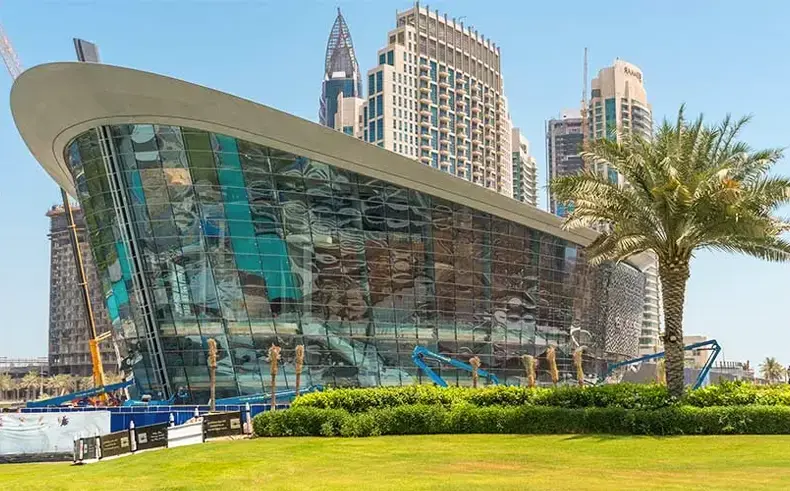
Stability and Governance
Stability and governance in Dubai are two pillars that have contributed to the emirate’s remarkable growth and prosperity over the past few decades. Dubai, one of the seven emirates of the United Arab Emirates (UAE), has become a global symbol of stability and effective governance.
First and foremost, political stability is a hallmark of Dubai’s governance. The UAE, including Dubai, enjoys a system of hereditary monarchies, ensuring a consistent and stable leadership structure. This political stability has created a conducive environment for both local and foreign investment, fostering economic growth and development.
Furthermore, Dubai’s governance is marked by transparency and efficiency. The government has implemented a range of policies to attract foreign businesses and investments, such as free economic zones and favorable tax regimes. These initiatives have transformed Dubai into a global business hub, attracting multinational corporations and entrepreneurs from around the world.
Additionally, the emirate’s commitment to infrastructure development and diversification has fueled its economic stability. Dubai has invested heavily in creating world-class infrastructure, from modern transportation networks to state-of-the-art airports and seaports. This strategic approach has positioned Dubai as a trade and tourism hub, driving economic growth and ensuring long-term stability.
Dubai’s Political Landscape
Dubai’s political landscape is firmly anchored in the broader context of the United Arab Emirates (UAE). As a member emirate of the UAE, Dubai operates within a constitutional monarchy framework under the leadership of the Al Maktoum family. Key elements of Dubai’s political landscape include governance, representation, and participation in the federal system.
Dubai’s ruler, His Highness Sheikh Mohammed bin Rashid Al Maktoum, holds the titles of Vice-President and Prime Minister of the UAE, in addition to being a member of the Supreme Council of the Union. This unique role grants him a prominent position in shaping national policies and direction.
Dubai’s political engagement is exemplified through its participation in the electoral college, where citizens play a role in electing representatives to the Federal National Council (FNC) of the UAE. The FNC is the supreme federal legislative body responsible for discussing and proposing legislation.
The Dubai Municipality, established in 1954, plays a pivotal role in city planning and local governance, while the Government of Dubai encompasses over 58 governmental departments, overseeing areas such as security, education, transportation, and economic policy. Dubai’s judicial system is independent of the federal judiciary, highlighting its commitment to upholding the rule of law.
Dubai’s political landscape also accommodates traditional elements, such as the open majlis, where citizens and representatives of the Ruler engage in discussions and provide feedback on domestic issues.
Leadership for Prosperity
Leadership for prosperity in Dubai is exemplified by the visionary leadership of His Highness Sheikh Mohammed bin Rashid Al Maktoum, who holds multiple pivotal roles, including that of the Ruler of Dubai, Vice-President, and Prime Minister of the United Arab Emirates (UAE). Under his guidance, Dubai has witnessed unparalleled economic growth and development, transforming it into a global economic powerhouse.
Sheikh Mohammed’s leadership is characterized by his forward-thinking approach and a commitment to innovation and diversification. His strategic vision is the driving force behind the city’s transition from a primarily oil-dependent economy to a diverse and dynamic one, with a strong emphasis on sectors like finance, tourism, trade, and technology.
Dubai’s prosperity is further facilitated by the Dubai Executive Council, led by the Crown Prince of Dubai, Hamdan bin Mohammed Al Maktoum. This body is responsible for managing and overseeing governmental agencies, ensuring efficient administration, and the implementation of key policies.
The city’s prosperity is also underpinned by a commitment to good governance, legal systems, and economic policies that promote a favorable business environment. The Government of Dubai oversees various departments, each responsible for specific areas such as security, education, transportation, and economic policy.
Dubai’s rise to prosperity is a testament to the city’s leadership’s ability to create a welcoming and stable environment for businesses and investors, making it a global hub for trade, commerce, and tourism. It reflects a harmonious blend of tradition and modernity, fostering an atmosphere of innovation and progress that benefits not only the local population but also the international community.
Policies Fueling Economic Growth
Policies fueling economic growth in Dubai are a crucial factor in the emirate’s transformation from a desert city into a global economic hub. Several key policies and initiatives have been instrumental in driving this remarkable growth.
- Diversification: Dubai recognized early on that its reliance on oil was unsustainable in the long term. As a result, the emirate embarked on a diversification strategy, encouraging investment in various sectors such as finance, tourism, real estate, and technology. This diversification has not only reduced dependence on oil but also created a more resilient and dynamic economy.
- Free Zones: Dubai established numerous free zones, such as Dubaithethe International Financial Centre (DIFC) and Jebel Ali Free Zone, to attract foreign investments. These zones offer incentives like 100% foreign ownership, tax exemptions, and simplified regulations, making them attractive for businesses looking to establish a presence in the region.
- Infrastructure Investment: Dubai has consistently invested in world-class infrastructure, including state-of-the-art airports, seaports, and transportation networks. These investments have facilitated trade and positioned Dubai as a regional and global logistical hub.
- Open Business Environment: Dubai maintains a business-friendly environment, with streamlined administrative processes, minimal bureaucracy, and clear regulations. These features make it easy for entrepreneurs and corporations to set up and operate businesses in the emirate.
- Tourism and Real Estate: The city’s policies promoting tourism and real estate development have attracted global visitors and investors. Iconic projects like the Burj Khalifa and Palm Jumeirah have contributed significantly to the growth of these sectors.
- Tax Policies: Dubai’s low tax environment, with no personal income tax and low corporate taxes, has attracted international corporations and high-net-worth individuals seeking to benefit from favorable tax conditions.
Global Connections: Dubai on the World Stage
Dubai’s global connections have propelled the city onto the world stage as a dynamic and influential player in the realms of business, trade, tourism, and culture. The emirate’s strategic location, modern infrastructure, and visionary leadership have facilitated these global ties, making Dubai a significant global hub.
- Trade and Logistics Hub: Situated at the crossroads of Europe, Asia, and Africa, Dubai has leveraged its strategic location to become a global trade and logistics hub. The world-class ports, airports, and transportation networks have facilitated the flow of goods and services, making it an essential link in the global supply chain.
- Business and Finance: Dubai’s thriving business environment, characterized by low taxes and favorable regulations, has attracted multinational corporations and financial institutions. The Dubai International Financial Centre (DIFC) serves as a financial hub connecting the East and West.
- Tourism: Dubai’s tourism sector has grown exponentially, with the city becoming a top global destination. Iconic landmarks, luxurious resorts, and a range of cultural attractions draw visitors from all corners of the world.
- Cultural Exchange: The city’s cultural diversity and open society foster a thriving environment for cultural exchange. Dubai hosts international events, exhibitions, and festivals, promoting cross-cultural understanding and collaboration.
- Expo 2020: Hosting the World Expo in 2020 further solidified Dubai’s position on the world stage. The event showcased innovation, sustainability, and global connectivity, attracting millions of visitors and participants.
- Global Connectivity: Dubai International Airport, one of the world’s busiest, connects the city to over 220 destinations worldwide, facilitating the movement of people and goods and enhancing Dubai’s global influence.
Diplomatic Ties and Partnerships
Dubai’s diplomatic ties and partnerships play a vital role in the emirate’s global engagement, economic growth, and international influence. As part of the United Arab Emirates (UAE), Dubai benefits from the UAE’s overarching foreign policy framework, but it also maintains its diplomatic activities, contributing to its unique position in the region and the world.
Bilateral Relations are at the heart of Dubai’s diplomatic efforts. The emirate actively fosters strong connections with numerous countries, maintaining diplomatic missions and embassies that work to strengthen political, economic, and cultural ties. These diplomatic posts facilitate trade, investment, and cultural exchange, contributing significantly to Dubai’s global connectivity and the enhancement of its international stature.
Economic Alliances are another crucial aspect of Dubai’s diplomacy. The leadership in Dubai recognizes the importance of economic partnerships, both regionally and globally. The city has established free trade agreements and strategic economic partnerships with various nations, promoting trade and investment. Dubai’s business-friendly environment, coupled with the UAE’s strategic location, makes it a favored destination for foreign businesses looking to establish a foothold in the Middle East.
International Organizations play a significant role in Dubai’s global engagement strategy. Dubai is a member of various international organizations, reflecting its commitment to addressing global challenges. These affiliations contribute to the emirate’s involvement in global discussions on issues such as climate change, sustainability, and humanitarian aid, allowing Dubai to actively participate in addressing some of the world’s most pressing issues.
Cultural and Educational Exchanges are important facets of Dubai’s diplomatic endeavors. The city actively engages in cultural diplomacy and educational partnerships, hosting a multitude of cultural events, exhibitions, and educational institutions. These initiatives attract talent from around the world, fostering global intellectual exchange and contributing to a thriving international cultural scene.
Dubai’s Remarkable Evolution
Dubai, a city in the United Arab Emirates, has undergone a remarkable evolution over the past few decades. What was once a modest trading post has transformed into a global metropolis, known for its iconic skyscrapers, luxurious lifestyle, and world-class amenities.
Dubai’s transformation began in the late 20th century, driven by visionary leadership and strategic investments. The construction of the Burj Al Arab, a sail-shaped luxury hotel, marked the city’s foray into architectural innovation. Subsequently, the Palm Islands and the world’s tallest building, the Burj Khalifa, became symbols of Dubai’s ambition and opulence.
Economic diversification played a crucial role in Dubai’s evolution. While initially reliant on oil revenues, the city has diversified its economy by investing in sectors like tourism, real estate, and finance. Dubai International Airport has become a global aviation hub, connecting people from around the world.
Dubai’s commitment to becoming a smart city is also notable, with initiatives aimed at enhancing infrastructure and technology, making daily life more efficient for residents and visitors. The city’s dedication to hosting international events, like Expo 2020, further solidifies its position as a global hub for culture and commerce.
Dubai’s transformation is a testament to human ingenuity, determination, and forward-thinking leadership. It serves as a model for cities seeking to reinvent themselves in the modern era and continues to captivate the world with its extraordinary growth and innovation.
From Humble Beginnings to a Thriving Metropolis
From humble beginnings as a fishing village, Dubai has evolved into a thriving metropolis with a history rooted in trade, culture, and resilience. The United Arab Emirates, in which Dubai is a prominent emirate, has a complex history of human settlement dating back to the trading networks of the Indus Valley, Mesopotamia, and the Levant. Archaeological findings at sites like Al-Ashoosh, Al Sufouh, and Saruq Al Hadid reveal continuous habitation from ancient times through various periods, including the Iron Ages.
Dubai’s significance as a trading hub can be traced to its role as a source of metallic goods like copper and bronze, known to the Sumerians as “Magan.” Even before the introduction of Islam to the region, Dubai’s people engaged in trade and commerce, as seen through the mention of the city in the Book of Geography by Abu Abdullah al-Bakri.
The establishment of modern Dubai began in the 18th century when it was a small town inhabited by the Bani Yas tribe and subject to Abu Dhabi’s rule. It wasn’t until 1833, following tribal feuding, that members of the Al Bu Falasah tribe seceded from Abu Dhabi and established themselves in Dubai. In the late 19th century, Dubai faced challenges such as a smallpox epidemic and fires that threatened its existence.
In the early 20th century, visionary leaders like Maktoum bin Hasher Al Maktoum transformed Dubai into a thriving port and trading center. Policies of free trade and land grants attracted merchants from nearby regions, and the frequency of steamship visits solidified Dubai’s position as an emerging hub. Despite setbacks, including a devastating storm in 1908, the city persevered.
Transformative urban development
Transformative urban development in Dubai can be traced back to its pre-oil era when the emirate was primarily a trading hub, relying on its geographical proximity to Iran. Dubai’s evolution from a modest town into a global city is a remarkable story of vision, ambition, and adaptability.
In the early 20th century, Dubai was already a vital port for foreign traders, especially those from Iran. As the population grew and amenities improved, Dubai’s Al Bastakiya district and modern infrastructure began to take shape. However, the collapse of the pearl trade due to the Great Depression and the emergence of cultured pearls in the 1930s pushed the emirate into a period of economic hardship.
Dubai’s fortunes changed in 1966 when oil was discovered in its territorial waters. This discovery set off a construction boom, bringing a massive influx of foreign workers and leading to an astonishing 300% population growth between 1968 and 1975. Sheikh Rashid’s forward-thinking approach included developing vital infrastructure like Port Rashid, which transformed Dubai into a major trading and logistics center.
Sheikh Rashid’s emphasis on diversifying the economy and building infrastructure led to Dubai’s growth and development even before oil revenue became a dominant factor. Dubai’s journey from a modest trading town to a global business and tourism hub was significantly shaped during these pivotal years. Today, the city’s skyline, modern transportation systems, and world-class amenities stand as a testament to its transformative urban development and visionary leadership.
From Desert Sands to Dazzling Skyscrapers
The journey to modern Dubai is a testament to the emirate’s extraordinary transformation over the decades. Preceding the formation of the United Arab Emirates (UAE), Dubai, along with other “Trucial States,” was under British protection, with the British government managing foreign affairs and defense. However, a pivotal moment in 1968 marked the beginning of significant change.
British Prime Minister Harold Wilson’s announcement of the withdrawal of British troops from the region on January 16, 1968, initiated a series of negotiations and discussions among the coastal emirates, including Dubai. The principle of union was first agreed upon in a historic meeting between Sheikh Zayed bin Sultan Al Nahyan of Abu Dhabi and Sheikh Rashid of Dubai in February 1968. Their agreement to work towards a unified entity involving other emirates set the stage for a new era. Over the next two years, stormy negotiations unfolded among the rulers of the emirates, culminating in a union agreement in 1971.
The 1970s saw Dubai’s continued growth, propelled by oil revenues and a thriving trade sector. Notably, the establishment of Jebel Ali Port in 1979 and the subsequent creation of the Jebel Ali Free Zone (JAFZA) in 1985 played pivotal roles in attracting foreign investment and businesses. Dubai’s airport and aviation industry also expanded, fostering international connectivity.
Despite challenges, such as the Gulf War in 1991, Dubai persevered, attracting foreign trading communities and refocusing on free trade and tourism. The emirate’s remarkable journey from a small coastal town to a global economic and cultural hub is a testament to its adaptability, strategic vision, and resilience. Today, modern Dubai stands as an emblem of progress and prosperity, with iconic developments like the Palm Jumeirah and thriving sectors in trade, finance, and tourism.
Sun, Sand, and Skyscrapers: Dubai’s Climate
Dubai’s climate, characterized by the scorching sun, endless stretches of sand, and iconic skyscrapers, is emblematic of its unique geographical location. The city boasts a hot desert climate, falling under the Köppen classification of BWh. The weather in Dubai is a study in contrasts, with summers that are not for the faint of heart and winters that offer respite from the sweltering heat.
Summers in Dubai are intense, with temperatures soaring to an average high of around 40 °C (104 °F). These months, particularly August, are characterized by prolonged heat, strong winds, and high humidity. Sunlight is abundant throughout the year, creating the perfect backdrop for the city’s glittering skyline.
Winters, while cooler, remain relatively mild to warm. January, the coolest month, sees an average high of 24 °C (75 °F) and comfortable overnight lows of 14 °C (57 °F). It’s during these months that Dubai residents and visitors can enjoy the city’s outdoor attractions and events.
Although Dubai is often associated with arid conditions, precipitation has been on the rise in recent years, averaging around 110.7 mm (4.36 in) annually. The city’s summers are also notorious for their high humidity, leading to exceptionally uncomfortable conditions, with dew points surpassing 30 °C (86 °F) at times. Heat index values can even exceed 60 °C (140 °F) during the peak of summer. Dubai’s weather reflects the extremes of a desert environment, shaping the unique lifestyle and experiences that define this dynamic metropolis.
Architectural Marvels of Dubai: A Modern Oasis
Dubai, a city in the United Arab Emirates, has emerged as a global hub for modern and innovative architectural design. This modern oasis boasts a rich collection of buildings and structures that blend various architectural styles, with a notable emphasis on modern interpretations of Islamic architecture. The city’s architectural evolution has driven experienced bee a boom in construction and architectural innovation, attracting top firms from around the world.
Leading architectural and engineering design firms like Al Hashemi, Aedas, and even renowned firms from New York and Chicago have contributed to Dubai’s skyline. The result is a transformation of modern Islamic and world architecture, particularly in skyscraper design and technology.
Dubai’s skyline is unrivaled, featuring an impressive number of completed or topped-out skyscrapers, including those reaching heights of 2⁄3 km, 1⁄3 km, or 1⁄4 km. The pinnacle of this architectural renaissance is the iconic Burj Khalifa, standing at a staggering 829.8 meters (2,722 feet), making it the world’s tallest building. This remarkable structure derives its design inspiration from Islamic architecture, featuring a triple-lobed footprint based on the desert flower hymenocallis native to the Dubai region.
Visitors can experience Dubai’s architectural wonders from the Burj Khalifa’s observation deck, which is one of the world’s highest, offering stunning panoramic views of the city.
In the 2010s, plans for the Creek Tower aimed to further solidify Dubai’s position as the home of the tallest buildings, but the project was placed on hold during the COVID-19 pandemic. However, the legacy of architectural innovation in Dubai continues to captivate and inspire, making the city a true modern architectural oasis.
Iconic Oasis of Luxury: The Burj Al Arab
The Burj Al Arab, often dubbed to complete”the world’s only 7-star hotel,” is a true architectural gem in Dubai. Although the hotel’s management never officially claimed this title, it gained fame as a symbol of opulence and extravagance. The sail-shaped structure opened its doors to guests in December 1999 and has since become an iconic landmark. With its lavish interiors and world-class service, the Burj Al Arab is a testament to Dubai’s commitment to redefining luxury in the world of hospitality.
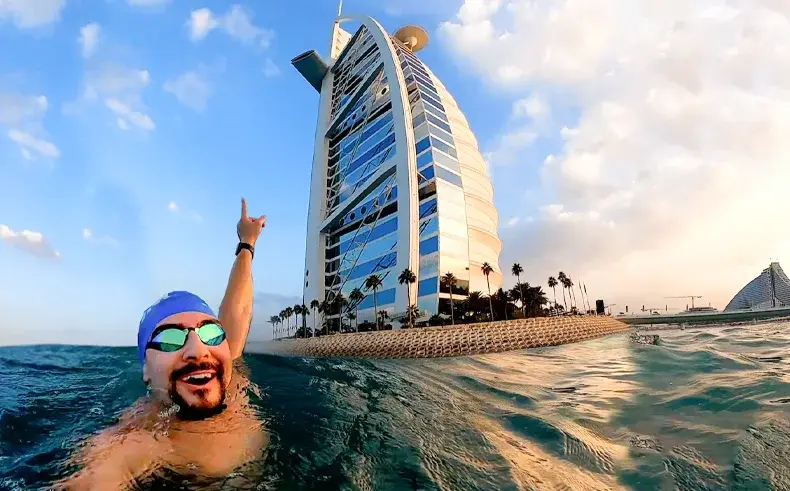
Burj Khalifa: Reaching for the Sky
The Burj Khalifa, formerly known as the Burj Dubai, stands as the tallest building globally, reaching a staggering height of 828 meters (2,717 feet). This towering skyscraper is not just a marvel of modern engineering but also a tribute to nature’s beauty, drawing inspiration from the desert flower Hymenocallis. It opened its doors on January 4, 2010, and has since become a symbol of Dubai’s ambition and architectural prowess, offering breathtaking views from its observatory decks.
Palm Jumeirah: A Man-Made Island Paradise
The Palm Jumeirah is an artificial archipelago that graces the coastal area of Dubai. Constructed between 2001 and 2006, this incredible feat of engineering is the smallest and original of Dubai’s Palm Islands. Created through land reclamation, it showcases meticulous design and planning, making it a sought-after residential and leisure destination. With its distinctive palm tree shape, Palm Jumeirah has transformed the Dubai coastline and continues to be a symbol of innovation in urban development.
The World Islands: A Map in the Sea
The World Islands, an archipelago in the Persian Gulf, redefines the concept of luxury living in Dubai. These small artificial islands are crafted in the shape of a world map, offering elite residential and leisure opportunities. Constructed using sand dredged from Dubai’s coastal waters, this project is a testament to Dubai’s commitment to pushing the boundaries of development and design. Each island represents a different country, and together, they create a unique blend of geography and opulence.
Dubai Miracle Garden: A Floral Extravaganza
The Dubai Miracle Garden, the world’s largest flower garden, is a breathtaking oasis in the heart of Dubai. With over 50 million flowers and more than 70 species of flowering plants, this garden is a testament to Dubai’s innovative use of resources. It utilizes treated wastewater for irrigation and employs drip irrigation methods, making it a sustainable marvel. The garden captivates visitors with its vibrant colors and imaginative floral displays, although it closes during the scorching summer months.
Dubai Marina: The Artificial Canal City
Dubai Marina, an artificial canal city, stretches along the Persian Gulf shoreline for 3 kilometers (2 miles). This thriving district in Dubai offers a unique blend of residential, leisure, and business opportunities. As of 2018, it boasts a population of over 55,000 residents and is known for its stunning waterfront views and modern architectural design. Dubai Marina stands as a testament to the city’s commitment to creating innovative urban spaces that cater to the needs of its diverse population.
Address Beach Resort and Residences: Sky-High Luxury
The Address Beach Resort and Residences, a set of two towering structures, are connected at the base and feature a sky bridge at the top. This architectural marvel is known as Jumeirah Gate and opened in December 2020. It stands out as a symbol of luxury and innovation, housing the world’s highest occupiable sky bridge floor and boasting the world’s highest infinity pool in a building. Situated along the beach, these structures redefine modern living in Dubai, offering residents and guests unparalleled views and experiences at breathtaking heights.
Efficiency in Motion: Dubai’s Transportation Network
Transport in Dubai is overseen by the Roads and Transport Authority (RTA), a government agency established in 2005 through royal decree. The city’s public transport system has grappled with issues related to congestion and reliability in the past. To address these challenges, a substantial investment program, totaling over AED 70 billion, was initiated, with numerous improvements by 2020, coinciding with a projected population exceeding 3.5 million.
In 2009, Dubai Municipality statistics indicated a staggering 1,021,880 registered cars in Dubai, highlighting the city’s reliance on personal vehicles. Despite this, in January 2010, only 6% of Dubai’s residents utilized public transportation, showcasing the ongoing need for enhancements in this sector.
Dubai’s Road Network: Connecting the Emirate’s Pathways to Progress
Dubai’s intricate network of roads and highways, featuring key routes like E 11 (Sheikh Zayed Road) and E 311 (Sheikh Mohammed Bin Zayed Road), plays a pivotal role in the city’s rapid development, linking it to neighboring towns and emirates. The seamless connectivity, facilitated by E 44 (Dubai-Hatta Highway), E 77 (Dubai-Al Habab Road), and E 66 (Oud Metha Road), ensures that Dubai’s residents and visitors can easily traverse the urban landscape.
Dubai’s intra-city routes, such as D 89 (Al Maktoum Road/Airport Road), D 85 (Baniyas Road), D 75 (Sheikh Rashid Road), D 73 (Al Dhiyafa Road), D 94 (Jumeirah Road), and D 92 (Al Khaleej/Al Wasl Road), ensure comprehensive access to various localities within the city. The city’s bridges and tunnels, including Al Maktoum Bridge, Al Garhoud Bridge, Al Shindagha Tunnel, Business Bay Crossing, and the Floating Bridge, facilitate efficient and smooth commuting, reaffirming Dubai’s status as a global transportation hub.
Furthermore, Dubai’s Public Bus Transport system, managed by the RTA, operates a vast network with 140 routes, offering convenient mobility to millions. The well-regulated taxi services, including the government-backed Dubai Taxi Corporation and private operators, serve residents and tourists alike, enhancing Dubai’s transportation landscape.
Amidst this bustling road network stands SaadatRent, a prominent car rental company, offering a convenient way to rent a car in Dubai. Their diverse fleet caters to the needs of those exploring the city, providing an array of transportation options for both residents and tourists.
Dubai Metro: The Pinnacle of Modern Urban Transit
The Dubai Metro, a testament to the city’s commitment to cutting-edge transportation, comprises two lines, the Red Line and the Green Line, inaugurated in September 2009. The Red Line, with 29 stations, serves as the backbone of the system, spanning from Rashidiya Station to UAE Xchange Station in Jebel Ali. It boasts 4 underground, 24 elevated, and 1 ground-level station. The Green Line stretches from Etisalat Station to the Creek Station, encompassing 20 stations, including 8 underground and 12 elevated stops.
The Dubai Metro’s automated, driverless trains make it a technological marvel, and it marks the first urban train network in the Arabian Peninsula. An extension connecting to the EXPO 2020 site further enhances its reach. As part of Dubai’s comprehensive transportation network, it joins the Palm Jumeirah Monorail, and Dubai Tram, and plans for a high-speed rail system, positioning the city as a global leader in modern transit solutions.
Dubai International Airport and Al Maktoum International Airport
Dubai International Airport (DXB) stands as a global aviation juggernaut, serving as the primary hub for the Emirates and connecting not only the city of Dubai but also various emirates across the United Arab Emirates. Renowned for its bustling activity, DXB is the third-busiest airport worldwide in terms of passenger traffic and the busiest for international passengers. Beyond its passenger role, the airport ranks as the sixth-busiest for cargo, managing a staggering 2.37 million tons in 2014.
Emirates, the national airline of Dubai, is a pivotal player, serving a vast network of over 150 destinations in more than 70 countries across six continents, showcasing the city’s international reach.
Additionally, the development of Al Maktoum International Airport (DWC) commenced in 2004, marking an ambitious expansion. The airport’s first phase boasts impressive features, including an A380-ready runway, remote stands, a cargo terminal, and a passenger terminal designed for five million passengers annually. Upon completion, Dubai World Central-Al Maktoum International Airport will emerge as the world’s largest airport, equipped with five runways, four terminal buildings, and the capacity to handle 160 million passengers and 12 million tons of cargo.
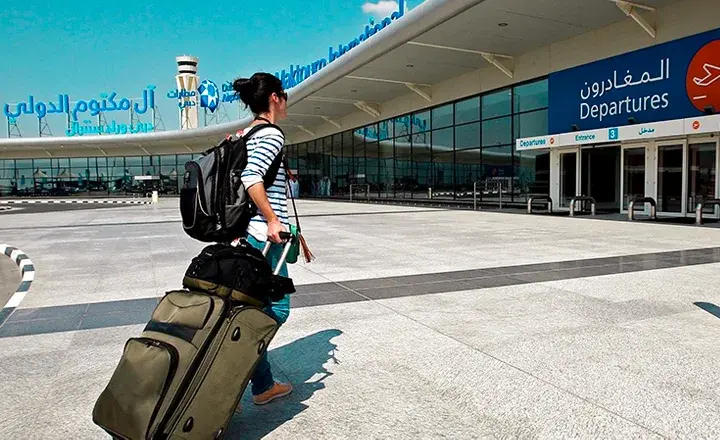
Dubai’s Maritime Landscape: Ports, Waterways, and Global Trade
Dubai’s waterways play a vital role in the city’s transportation and trade infrastructure. Two major commercial ports, Port Rashid and Port Jebel Ali, define the emirate’s maritime landscape. Port Jebel Ali stands as a remarkable feat, being the largest human-made harbor globally, the Middle East’s biggest port, and the 7th busiest port globally. This strategic location cements Dubai’s role as a global trade hub, serving as a bridge between Europe and China, as well as Africa, not to mention its crucial role in oil transport.
For a more traditional experience, abras—small boats—continue to transport passengers across Dubai Creek, connecting the historic districts of Bur Dubai and Deira. The Dubai Water Bus System, operated by the Marine Transport Agency, offers a comfortable and air-conditioned boat service across select destinations along the creek. Additionally, the Water Taxi service is a recent addition, offering convenient and efficient transport options.
Dubai’s commitment to expanding and enhancing its logistics and port facilities is evident, making the city an integral part of the Maritime Silk Road. This ancient trade route, historically connecting China to Europe via India and the Red Sea, has been reinvigorated with modern infrastructure and technology, strengthening Dubai’s position as a global maritime and trade powerhouse.
Last Words
In the heart of the Arabian Peninsula, Dubai stands as a testament to human ambition and ingenuity. It’s a city where the desert’s golden sands meet the cool shade of towering skyscrapers, where tradition dances gracefully with innovation, and where the past and the future unite in a symphony of progress. Dubai isn’t just a destination; it’s a remarkable journey that leaves an indelible mark on your heart and soul.
As we’ve explored Dubai’s rich tapestry, from its multicultural mosaic to its economic diversity, one thing becomes abundantly clear: this city thrives on diversity, drawing strength from its people’s demographic richness and the harmonious coexistence of various faiths. The unity in diversity and cultural integration are exemplary, making Dubai a true melting pot of cultures, where every visitor is welcomed with open arms.
Dubai’s accolades, such as its second consecutive victory in TripAdvisor’s Travelers’ Choice Awards for 2023, reinforce its status as a global favorite. Its remarkable global connections and its prominent presence on the world stage bear testimony to its universal appeal.
In conclusion, Dubai is not just a city; it’s an experience, an embodiment of human potential. It’s a place where the past inspires the future, where diversity is celebrated, and where progress is relentless. Whether you’re drawn to the sun, sand, or skyscrapers, Dubai offers a unique blend of experiences that will leave you with cherished memories and a longing to return. Dubai is truly the world’s best destination.
FAQ
Dubai’s universal appeal is evident with its second consecutive victory in TripAdvisor’s Travelers’ Choice Awards for 2023, showcasing its enduring popularity. Its global connections and prominence make it a top global choice.
Dubai is a global hub for various sports, hosting international events like the Dubai World Cup, Dubai Tennis Championships, Dubai Sevens, and the Indian Premier League, attracting athletes worldwide.
Dubai features a hot desert climate (Köppen classification BWh) with scorching summers, averaging 40°C (104°F), and milder winters, around 24°C (75°F) in January, ideal for outdoor activities and events.
Dubai Metro consists of the Red Line (29 stations) and the Green Line (20 stations). Its driverless trains integrate with Dubai’s advanced transit network, solidifying its global status in modern transportation.
